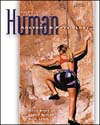 |  Hole's Human Anatomy & Physiology, 9/e David Shier,
Washtenaw Community College
Ricki Lewis,
The University at Albany
Jackie Butler,
Grayson County Community College
What's New- Throughout the text, pronunciation of key terms follows the term as it is first presented within the chapter.
- New vignettes have been written for chapters 6, 15, and 16
- Life-span changes sections have been added to the end of major system chapters.
- A reconnect feature has been added through the text to assist students in referencing helpful information in previous chapters to facilitate the understanding of various concepts.
- Discussion of polar covalent bonds and polar molecules, new figures presenting hydrogen bonds, and the quaternary structure of proteins have been added to chapter 2.
- In chapter 3, diffusion is now described a new movement of particles toward a region of lower concentration, and the etymology of the terms "hydrophilic" and "hydrophobic" are better presented.
- Details of glycoloysis and aerobic pathways have been moved from chapter 4 to the Appendix, and sections on cellular metabolism have been rewritten to clarify the terminology and to present the events in a logical order.
- In chapter 9, the description and definition of the sliding filament model has been clarified, and the structure of muscle and excitation-contraction coupling events are now covered in a more logical and sequential manner.
- The section on sodium and potassium channels and their importance for the resting membrane potential and action potentials has been substantially rewritten in chapter 10, and the discussion of local potential changes and action potentials has been reworked. Impulse conduction is explained more clearly.
- Chapter 11 offers greater clarification of motor versus sensory classification of cranial nerves as well as some new figures of the sympathetic and parasympathetic nervous systems and withdrawal reflex.
- A rewritten explanation of target cells and the importance of their receptors, hormones, and the distinction between exocrine, paracrine and autocrine is part of chapter 13.
- Chapter 15 has improved discussion of filtration in the capillary including osmotic pressure with a new figure illustrating filtration pressures within the capillary
- Chapter 16 has improved discussion of tissue fluid formation including plasma colloid osmotic pressure.
- Chapter 18 now discusses lipid and protein catabolism, which was previously in chapter 4.
- Chapter 19 contains more emphasis on the role of the respiratory system on control of blood pH and better explanation of the inverse relationship between pressure and volume.
- Chapter 20 offers clarification of the roles of aldosterone and atrial natriuretic polypeptide on urinary solute concentration, as opposed to the effect of antidiuretic hormone.
- A simplification of acid-base reactions and clarification of the relationship between renal hydrogen ion excretion and renal bicarbonate ion reabsorption are part of chapter 21.
- Chapter 24 has a "Genomics" approach to reflect the emergence of this new field, and a new clinical application "Gene Therapy Successes and Setbacks" was added.
- Meiosis was moved from chapter 24 to chapter 22.
|
|



 2002 McGraw-Hill Higher Education
2002 McGraw-Hill Higher Education

 2002 McGraw-Hill Higher Education
2002 McGraw-Hill Higher Education